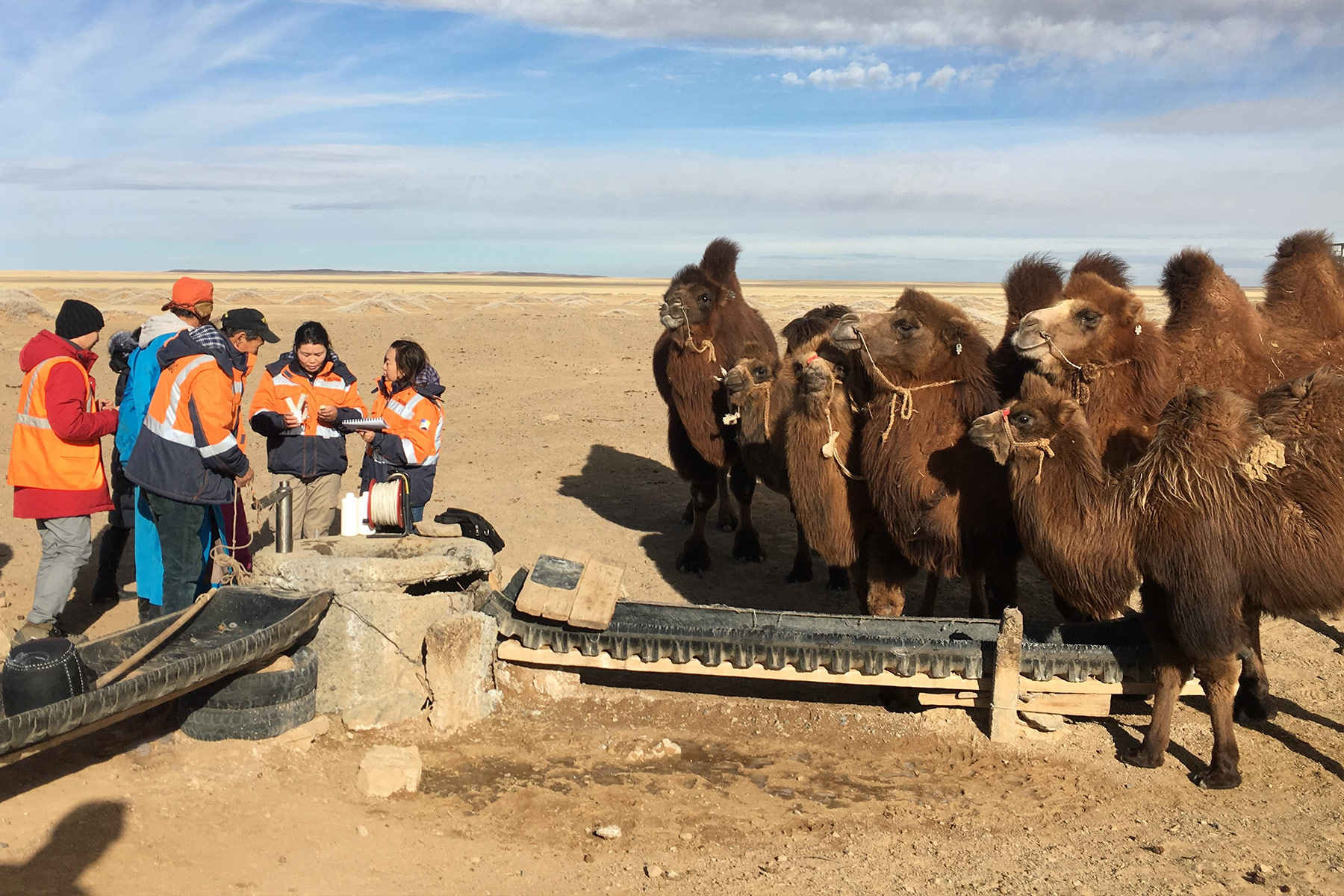Blog
Jun 21, 2017

Photo by Dominic Chavez, IFC
We seem to be inundated by new, emerging technologies, both physical and digital, plus all the breakthroughs in biotechnology. We sense the acceleration, with a clear shift in culture to technology based solutions, and so much emphasis on Exponential Technologies and the Fourth Industrial Revolution. It can feel overwhelming and leave us wondering what this stream of new technologies means for our organizations and what, if anything we should do?
The reality is we are not short new technologies – we have an abundance. We also certainly don’t lack needs for new solutions to how we will sustainably deliver everything from education to healthcare, housing, transportation, food, and clean water to a global population that is growing in size and prosperity. Many of these solutions will indeed come through the application of emerging technologies.
At the 2017 IFC Sustainability Exchange this June in Cartagena, Colombia, almost 400 leaders came together to discuss critical current topics for the infrastructure and natural resources sectors. Among others, technology and innovation were central themes and it seemed practitioners are looking for an answer to the question: Which few of the many new technologies to invest in to maximize impact? How do we make rational decisions about where we should invest precious resources on the few technologies that actually have the potential to make it through the development process and go from invention to real innovation – solutions that create real, on-going value in the world?
At Deloitte I help global organizations decide which emerging technologies to invest in; most of these are large corporations looking for new platforms to grow their business, usually in new ways different from their past. They only have finite resources and they want to know how to select the few technologies that will make it to market and then how to accelerate the development required to bring those new technologies to the market. Making this process more efficient has huge potential positive impact on society and to the financial performance of companies that get it right. Whether your organization is a large business, a startup, a government, an NGO, or an investment fund, the question is the same, how do we cut through noise and make some strategic choices?
In my experience, if you have clear and compelling answers to just three questions, then the technology is probably worthy of significant investment towards its promised impact.
What is the system?
This question is a substitute for the much more ambiguous question that we hear all the time, what is the market for the technology? The idea here is not to do a comprehensive market study but rather ask is there a real problem out there that needs solving, can the technology be a critical element to the solution, and do we understand the problem well enough to imagine the system required to solve it; technologies alone never solve problems, the systems they enable do. When we get to the systems level thinking it allows us to assess the real value of the technology: What other technologies might be needed for the complete system, and what other competing technologies could enable similar solutions? Sometimes we realize that no new technology is needed at all, and the innovative solution is the assembly of a new system from existing technologies.
One example is the Source water production system from Zero Mass Water. The enabling emerging technology is a proprietary material that absorbs water vapor from the air. Zero Mass Water took this material and designed a system around it that uses photovoltaics to produce heat and electricity to recover the absorbed water. The system extracts water from air – up to 5L per day from a single Source module – and can operate completely independent from any source of electricity making it a robust distributed means for providing clean drinking water anywhere. Multiple Source units can be combined to increase the volume of water produced. As part of this systems approach the company has also developed innovative financing options to enable broad access of the system to those in need of clean water.
If we can talk about the technology in the context of a system that we can also describe, and, as importantly, make it very clear that there is a clear and “durable” need (that is, a problem that has been identified but has been tough to solve before) that this system will solve, then it is reasonable to expect there will be a market for the technology. We can also ask what the value of solving the problem is and use that as the value enabled by the technology.
Is it stackable?
The stack-ability of technologies is something my friend and former colleague at Harvard, George Whitesides introduced in a TED Talk a few years ago. The idea here is that we are looking for technologies, or more importantly the systems they enable, to scale efficiently with demand. Stackable technologies are typically modular and can be combined and deployed in a distributed rather than centralized way. Wireless data networks are stackable – the network can be scaled in response to demand, in contrast to wired networks that require large upfront capital requirements and infrastructure to enable effective connectivity. One of 3D printing’s promises is to make manufacturing a stackable technology, where the capacity can be scaled with demand, even if the demand is only for one of something (because it’s been customized), or that it can be distributed and done where the demand exists.
The Source system described above is one example of a stackable system – just add more modules if you need more water. Another example is the WindRail distributed energy generation system developed by Anerdgy. In this case the core technologies are a combination of photovoltaics and wind turbines. The innovation is how these more mature technologies are combined into a modular system that is deployed on the edge of buildings. The WindRail modules capture a combination of wind and solar energy on buildings that lack sufficient roof space for use of traditional photovoltaic panels alone. The number of modules deployed scales with the energy demands of the building and the availability of roof edges.
If we can show how the technology enables stackable systems and solutions then it will likely scale efficiently with demand.
Is it sustainable?
The principle of the “triple bottom line” of sustainability spanning profit, people and planet has been around for some time. In this case applying sustainability to innovation enabled by emerging technologies encompassing profit, people and planet leads to three questions that we need to answer before we decide to further invest in a technology:
- What does the ecosystem look like around the system or solution, who are the stakeholders (people) in that ecosystem and are there appropriate and fair incentives (profit) that support the interests of all the stakeholders?
- Is there a business model that creates and captures value (profit) in a fair and sustainable way for all the players in the ecosystem (people)?
- What are the resource requirements for the system in terms of materials, energy and water (planet), how do these requirements scale with demand (connected to the stack-ability of the solution), and have we looked at the system through the lens of total-life-cycle analysis and circular economy.
The sustainability of the previous two examples will depend on how the companies that developed the systems choose to operate their business.One example that is based on digital, rather than physical technologies, is the application of blockchain technology to land rights. Thompson Reuters hosted a hackathon last year to explore this questions of how disruptive digital technologies such as blockchain could impact unmet needs around land rights in Africa. Blockchain is the enabling technology that provides an open, distributed ledgering system that guarantees fairness and transparency. In this case, rather than recording land rights in a central registrar that can only be accessed by a few and potentially manipulated, blockchain allows everyone who is participating to see the entire ledger at any time, and since it is replicated and distributed it cannot be easily forged or faked. A system built around blockchain could, for example democratize financial access by allowing individuals to use their property titles for peer-to-peer loans on a publicly accessible exchange. Such a system would meet the triple bottom line requirements of profit, people and planet, and is just one example of a large number of systems being built off this technology.
The beauty of this third question is two-fold: one it forces us to understand the overall way in which value is created and captured, it also integrates environmental and people issues with commercial and economic ones. They cannot be considered separately.
So when looking for emerging technologies worthy of investment for your organization ask if they enable Sustainable– Stackable – Systems. The answer to these questions will help us all work through the continuous stream of new technology and identify the few worthy of our investments.
Related Content
Tackling COVID-19, Small and Medium Sized Businesses are Poised to Prevail
Monitoring and Evaluation

